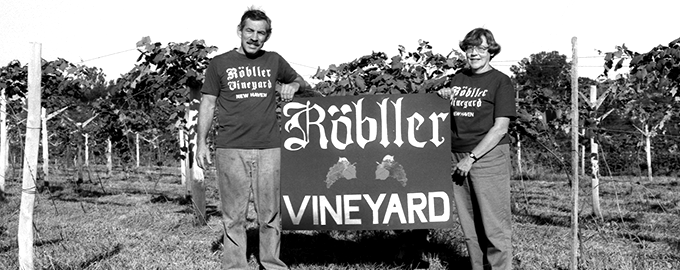Our Heritage
At Röbller Vineyard, winegrowing and great winemaking are our passion.
Our wines reflect our dedication to the land and our culture. Today, as one of the Midwest’s top estate-styled wineries, Röbller Vineyard is our pride and legacy.
Robert and Lois Mueller established Röbller Vineyard in New Haven, 1988.
From modest beginnings of winemaking as a backyard hobby in the 1970s, Röbller founder Robert Mueller and his wife Lois relocated from their original home in St. Louis to New Haven, coming home to their German heritage and upbringing and bringing to full life their love of winemaking. While earlier generations were involved in the making of beer as a livelihood, winemaking at home has always been a part of the Mueller family culture.
The site of what is today Röbller Vineyard carries a richness of character and history.
The site history dates back to the early 1800s, with the original homestead at Röbller Vineyard built in 1821, as part of the immigrant movement to the area. The establishment of this homestead was 15 years prior to the founding of Miller’s Landing, a riverboat stop on the Missouri River and one of the first steps in the civic growth of the area.
The riverboat stop’s founder, Phillip Miller, operated a wood yard on the river to fuel the steamboat trade. Arrival of the Union Pacific railroad in the 1850s brought increased commerce and economic activity to the area. In 1856, town fathers changed the name from Miller’s Landing to “New Haven,” reflecting the growth of the town from its origins as a steamboat stop.
Over the past 200 years, the land of Röbller Vineyard was used in a typical regional fashion — to grow row crops, raise livestock and deliver bounty from fruit orchards as a self-sustaining way of life. Today, Röbller maintains this ideal through our estate-grown wines, produced from the grapes of our vineyard.
Röbller is a contraction of Robert Mueller.
Our logo icon uses a print type called Agincourt which was a popular type style used in the early days of the Gutenberg Press.






